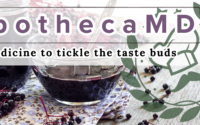Neuroprotective effects of Shogaol in metals (Al, As and Pb) and high fat diet induced neuroinflammation and behavior in mice
Curr Mol Pharmacol. 2022 Sep 28. doi: 10.2174/1874467215666220928110557. Online ahead of print.
ABSTRACT
BACKGROUND: Increased exposure of humans to toxic metals and high fat diet (HFD) consumption severely damages brain health. Natural plant extracts have shown huge potential to treat multiple human diseases.
OBJECTIVE: The present study was designed to evaluate the protective effects of Shogaol (an active component of ginger) in neuroinflammation and behavioral paradigms in mice treated with metals and HFD.
METHODS: 8-11 weeks old male mice model was developed by giving a combination of metals i.e. Arsenic (As), Lead (Pb) and Aluminum (Al), 25mg/kg each mixed in drinking water with laboratory prepared HFD (40% fat) for a total duration of 72 days. Shogaol treated groups received two doses (2mg/kg & 12mg/kg) of shogaol along with metals and HFD. The biochemical parameters including body weights, blood glucose, kidney and liver functions were assessed along with the integrity of blood brain barrier (BBB). The expression analysis of neuroinflammatory genes (TNF-α, IL-1β & GFAP) was performed using q-PCR in the hippocampus and cortex. The exploratory and anxiety like behavior was assessed using open filed, and depressive behavior was assessed through forced swim test, while learning and memory were assessed using Morris water maze test and y- maze test.
RESULTS: Shogaol (2mg/kg & 12mg/kg) treatment improved metabolic profile and reduced expression of neuroinflammatory genes in the cortex and the hippocampus. Shogaol treatment improved BBB integrity. Results of behavioral analysis showed that Shogaol treatment (2mg/kg & 12mg/kg) rescued behavioral impairment and improved anxiety and depression.
CONCLUSION: Shogaol treatment showed strong therapeutic potential in metals & HFD induced neuroinflammation and improved cognitive functions, thus, can be considered as a potential drug candidate in future.
PMID:36173059 | DOI:10.2174/1874467215666220928110557

